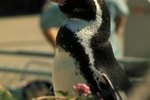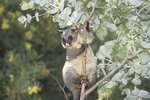
The white-flippered penguin (Eudyptula minor albosignata) is a wee subspecies of the blue penguin (Eudyptula minor). White-flippered penguins are native to areas close to Canterbury, which is a New Zealand province. These dainty penguins are not found anywhere else on the planet other than in the Canterbury region. Physically speaking, they are very similar to their blue penguin relatives.
Geography of the White-Flippered Penguin
White-flippered penguins are found solely on both Motunau Island and Banks Peninsula, both of which are part of the South Island and are close to Canterbury. Reproductive activities take place on both of those specific locales.
Habitat of the White-Flippered Penguin
White-flippered penguins establish nests in a variety of locations, including below rocks and bushes in holes, inside of caves, in dunes and within burrows. In terms of general natural habitat, white-flippered penguins stay close to bays, typically amidst piles of rocks and on headlands.
Mating
White-flippered penguins lay eggs between the months of July and December each year. Peak activity, however, begins in August. The baby chicks hatch after 33 to 39 days, according to the Center for Biological Diversity. Initial breeding in these penguins usually occurs from the ages of 2 to 3 years old.
Diet
The basic diet of the white-flippered penguin consists of both tiny squid and shoaling fish -- think anchovies and pilchards, for example. Although they also occasionally dine on crustaceans like krill, they do so with much less frequency. As far as general sustenance goes, white-flippered penguins have a lot in common with blue penguins.
Physical Appearance
These small, predominantly nocturnal creatures usually weigh just slightly over 3 pounds, and are typically around 1 foot tall. True to their naming, these penguins possess white coloration on their flippers' sides. The dorsal feathers, however, are bluish-gray in color.
Predators
White-flippered penguins have a diverse array of predators, which include ferrets, stoats, weasels, dogs and cats. Ferrets are especially problematic for these penguins.
Population Status
The United States Fish and Wildlife Service classified white-flippered penguins as a "threatened" species in September 2010. Numbers wise, only around 4,000 breeding pairs of these penguins remain.
References
- CanterburyNature: The White-Flippered Penguin
- U.S. Fish & Wildlife Service: White-Flippered Penguin
- Center for Biological Diversity: White-Flippered Penguin
- CommuniGate: White-Flippered Penguins
- Motunau Beach Biodiversity: White-Flippered Penguin
- AvianWeb: White-Flippered Penguin
- Canterbury's White-Flippered Penguin: Frequently Asked Questions
- Canterbury's White-Flippered Penguin: White-Flippered Penguin
Photo Credits
-
Jupiterimages/Photos.com/Getty Images



